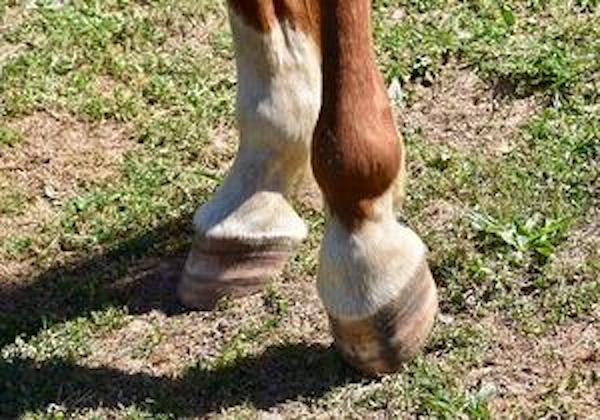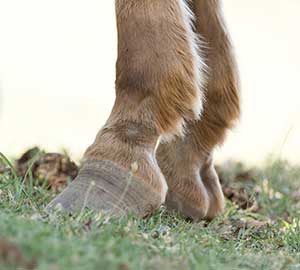
by ECIR Group Inc.
Hyperinsulinemia associated with pituitary pars intermedia dysfunction (PPID) and/or equine metabolic syndrome (EMS) is well documented to put horses at high risk of laminitis. While dietary control of simple sugars and starch is the most effective therapy to control hyperinsulinemia, some horses fail to respond.
Since the publication of articles in 2018 and 2019 describing the effects of the SGLT2 (sodium glucose cotransporter 2) inhibitor velagliflozin in controlling insulin levels in horses with hyperinsulinemia, the Equine Cushing’s and Insulin Resistance Group (ECIR Group) has been interested in exploring this family of drugs in horses that do not respond to the usual measures of diet/carbohydrate control, pergolide if the horse has PPID/Cushing’s, and metformin.
ECIR Group members with horses that had unresponsive high insulin levels and laminitis, in conjunction with their treating veterinarians, trialed them on canagliflozin. Because velagliflozin is not commercially available, members used the flagship SGLT2 inhibitor, canagliflozin, with estimated appropriate dosages based on published information.
Drs. Eleanor Kellon and Kathleen Gustafson of the ECIR Group, performed a retrospective analysis of lab results maintained in the group’s database from horses before and after treatment with the SGLT2 inhibitor canagliflozin. The report covered the first two years of experience with canagliflozin.
Kellon and Gustafson suggest that once daily administration of the SGLT2 inhibitor canagliflozin corrected hyperglycemia, reduced insulin to normal or near normal levels, and was 100% effective in reversing or reducing abnormal fat pads and eliminating laminitis pain in horses with refractory hyperinsulinemia and laminitis. The core aspects of therapy—diet control, exercise when possible, and adequate treatment of PPID—must also be maintained if using canagliflozin. Canagliflozin should be reserved for refractory cases.
Further controlled trials to investigate canagliflozin pharmacokinetics, pharmacodynamics, efficacy, and safety are needed; however, this study demonstrates that this class of drug has great potential for helping horses with persistent high insulin and repeated bouts of laminitis.
Eleanor M. Kellon and Kathleen M. Gustafson
Open Veterinary Journal, (2022), Vol. 12(4): 511–518 DOI: 10.5455/OVJ.2022.v12.i4.14

About ECIR Group Inc.
Started in 1999, the ECIR Group is the largest field-trial database for PPID and EMS in the world and provides the latest research, diagnosis, and treatment information, in addition to dietary recommendations for horses with these conditions. Even universities do not and cannot compile and follow long term as many in-depth case histories of PPID/EMS horses as the ECIR Group.
In 2013 the Equine Cushing's and Insulin Resistance Group Inc., an Arizona nonprofit corporation, was approved as a 501(c)3 public charity. Tax deductible contributions and grants support ongoing research, education, and awareness of Equine Cushing's Disease/PPID and EMS.
THE MISSION of the ECIR Group Inc. is to improve the welfare of equines with metabolic disorders via a unique interface between basic research and real-life clinical experience. Prevention of laminitis is the ultimate goal. The ECIR Group serves the scientific community, practicing clinicians, and owners by focusing on investigations most likely to quickly, immediately, and significantly benefit the welfare of the horse.
Your tax deductible contributions support ongoing education and awareness of Equine Cushing's Disease and Insulin Resistance. How to Help ECIR
You can find more informative articles in our section on Health & Education.

































